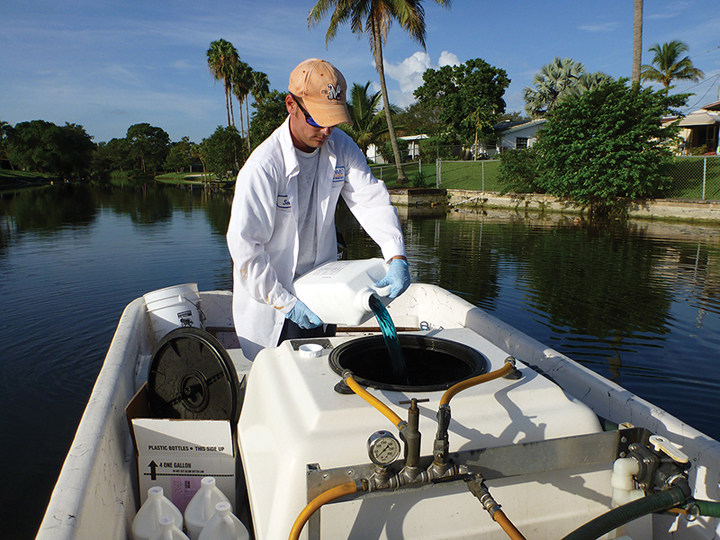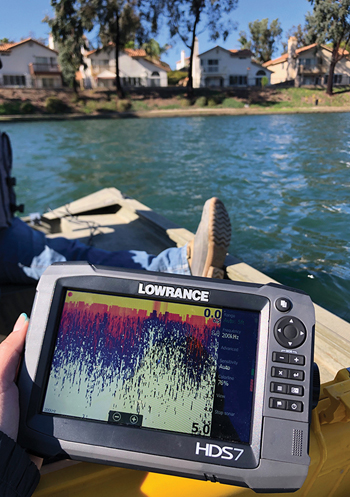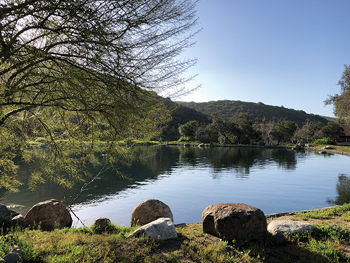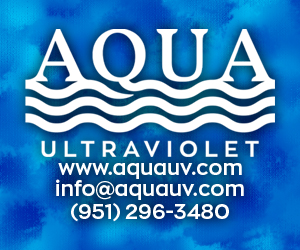
Arthur Pendragon, the mythical Breton King, meets the Lady in the Lake, who imparts to him the legendary sword Excalibur. It is with this authority that the chaos of the isles is eventually subdued. Arthur is taken to Avalon to either die of his wounds or be healed to return as the first and true King of England. In addition to fighting against vast forces, Arthurian knights also quested for the Holy Grail, which was finally realized by Galahad.
Even before the Bronze Age gave way to iron, Celts threw many bronzed items into their lakes and rivers. (Bronze is mostly copper with some tin.) Just like throwing salt over your shoulder for good luck, these ancient traditions had good results in combatting germs and algae. Druids like Merlin may or may not have suspected the presence of microorganisms, but the folk believed copper pleased the gods, so they continued to sacrifice these precious items over the centuries.
Technology marched forward, from stone to bronze, and then from iron to steel. Progress was our Lady, handing us new tools and choices that challenge tradition. Chelated copper is a example of this.

Choose Wisely
The Holy Grail represents any idyllic goal you know is worth pursuing, despite the struggle of an already-full schedule. In order to achieve it, you have to make sure you use a controllable and efficient weapon on your quest. Nowadays, we know that copper products can be used to control a body of water’s eternal opposition — algae and cyanobacteria. To kill 100% is impossible, so we infuse the water with trace elements of copper until they retreat like Mordred’s soldiers.
Many aquatic environments are rich in limestone, chalk or gypsum, and copper molecules attract these minerals like a magnet. The resulting compound is a heavy copper-carbonate (Cu2CO3), which precipitates out of the water column and collects at the bottom. This chemical bonding quickly diminishes the amount of copper in the water column. Historically, applicators answered this copper exhaustion by putting more into the water until the intended level of control was reached. This is like throwing more knights at a quest until one finally succeeds. It is nice to win — but at what ultimate cost to the kingdom?
Copper Bonding
Chelated copper products present an advantage in this ability to control, compared to solid copper-sulfates. A further step exists in a double-chelated copper molecule, which is our modern-day Excalibur.
Unchelated copper crystals (2+) can be toxic to many types of aquatic life at higher doses. This blunt weapon also combines with free hydrogen to form sulfuric acid (H2SO4), which is highly corrosive and smells like rotten eggs. Also, the application of a solid into water requires the crystal to dissolve, which may not occur before reaching the bottom. But tradition is difficult to overcome, as Arthur discovered too late in his dealings with Mordred. Many applicators will never move beyond the feel of solid copper hitting water.

Chelated copper solutions do not combine as easily with the aqueous minerals, because a portion of their ions (1+) are already bonded. These liquid algaecides deliver more control by remaining suspended within the water column longer. A lower weight of copper is needed for the same outcome, compared to over-dosing with the crystal form. The fortunate side effect is less precipitate at the bottom that will need to be removed when toxicity is too high. Limnology science is discovering that lake bottoms may account for the majority of their own annual nutrient-loading and toxicity issues. Anybody can swing a sword, but only a knight can fight for weeks before getting exhausted — that is, if they’re attacking the right target.
Modern-Day Excalibur
Double-chelated copper (0+) bonds most of the remaining ions. One might ask, “How is the algae affected if the ions are already bonded?” Algae do not swim away from threats; i.e., they are not mobile. The presence of diffusing copper interrupts the growth of microorganisms. There is a lower rate of copper exhaustion while realizing the same level of control with a double-chelated product — representing the best in our Grail Quest for solutions.
Applying double-chelated copper requires less labor and is safer to handle. The best copper products maintain potency in high-alkalinity waters and colder temperatures. When treating your water (or your Avalon), the choice is between a place devoid of growth and a place of rebirth.
The availability of a double-chelated copper product allows maximum power with the lowest toxicity. The algae will be kept to a healthy minimum, and sediment cleaning can be extended long into the future.

ous of this process!
Overall, lower toxic concentrations are better over the long term ecologically. Less copper in the water is less toxic for fish, which is especially important for trout. Arthur’s England had no trout, but they certainly had herring and hedges! This finer focus of copper allows for precision control toward the potable water limit of 1.0 ppm, according to the Environmental Protection Agency, Lead and Copper Rule, 1991.
Quest for the Grail
If Arthur represents the reach for civilization and modernity, then his many-named wife Guinevere represents nature. With strong Christian themes of Adam and Eve, these two figures lean on and pull against each other. Arthur embodies the burden of control, while his mercurial partner is passionate and sometimes described as a traitor or villain. We still love and fear the power of nature, trying to control her while lamenting her worst outbreaks of power and passion. This is our collective Quest for the Grail.
Remember that while Lancelot may have been the strongest warrior in the land, it was his son Galahad who was the ideal Knight of the Grail. His success ultimately unified the Bretons and the Welsh. This is another lesson we should all take to heart.


